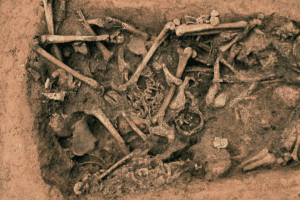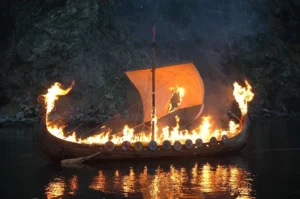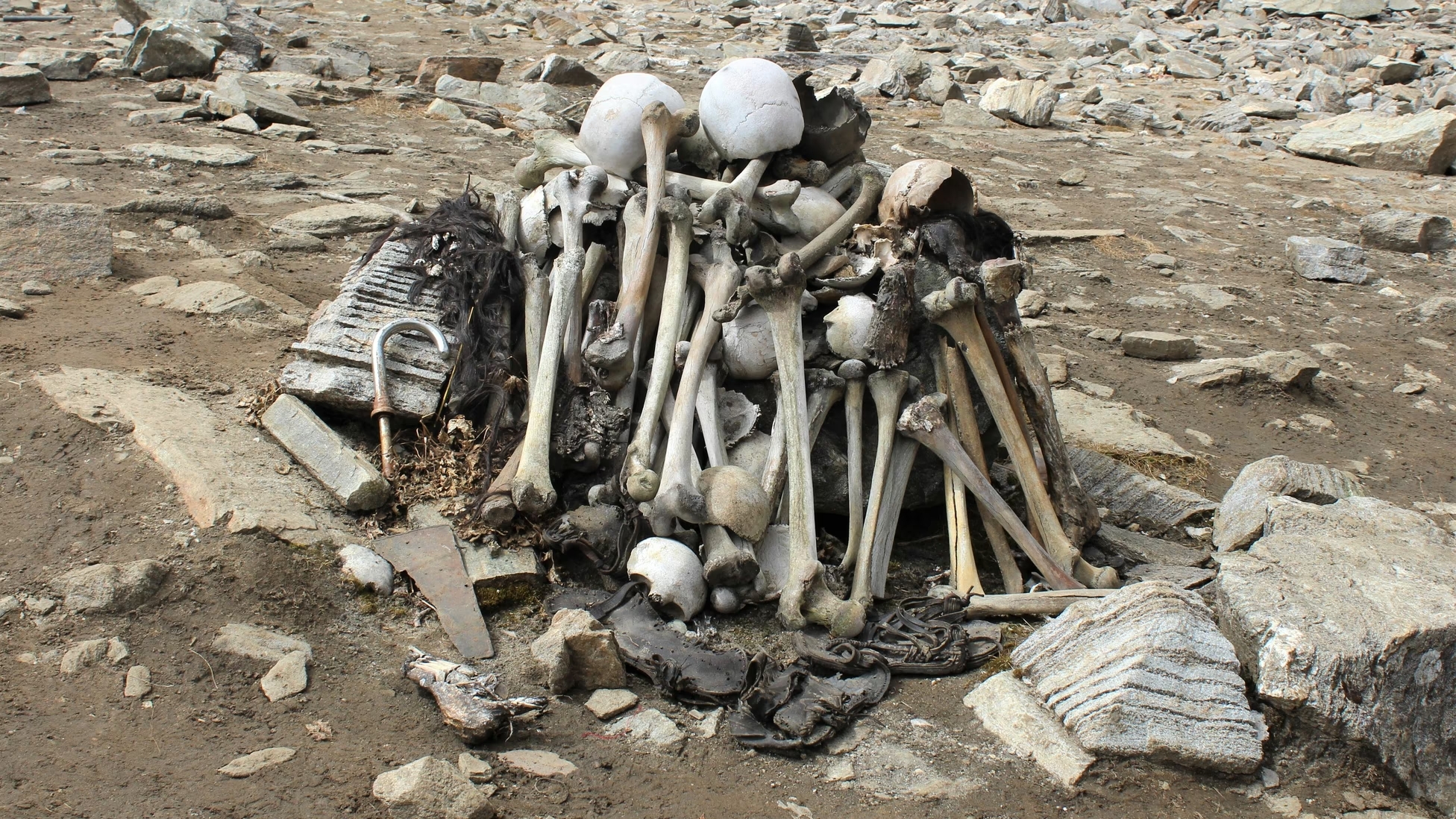
Located high in the Indian Himalayas, over 16,000 feet above sea level, lies a tiny glacial lake with a mysterious secret. At first glance, Roopkund Lake looks completely normal considering its location— cold, remote, ringed by jagged peaks and snow. But when summer sun hits and the thaw sets in, the water reveals something disturbing: hundreds of human skeletons all strewn across the lake.
It’s no surprise that this site is now better known as Skeleton Lake, and it’s for a good reason. Human bones litter almost the entire shoreline of this small lake, and if you are lucky enough to see it, you may discover skulls and femurs just floating in the water.
When a forest ranger and the British forces first stumbled upon the site in 1942, they were horrified. Well, you would be too if you saw that some of the skeletons still had hair clinging to their skulls. Even scarier was that some bones had pieces of flesh and even fingernails were still attached to frozen hands and feet. Imagine trekking through the mountains for days and suddenly coming across a lake filled with corpses — it must have looked like the aftermath of a massacre.
And in a way, it was.
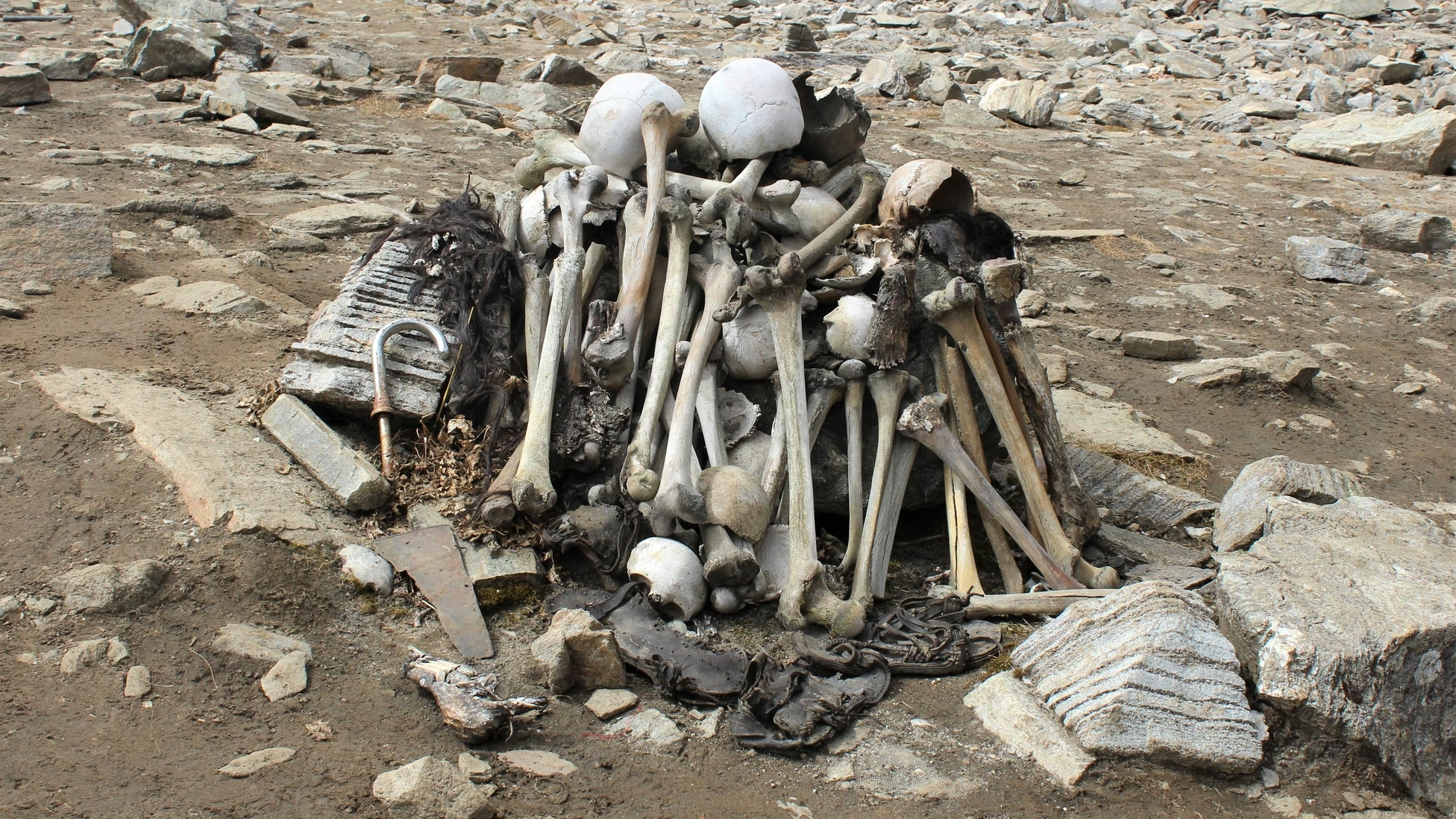
A Deadly Pilgrimage?
For decades, no one could agree on how so many people ended up dead in such a desolate place. Early ideas ranged from disease to a lost Japanese army caught in a blizzard. Others went down the road of ritual sacrifice — unlucky souls offered to the goddess Nanda Devi, whose pilgrims would walk near the lake.
It would take until the early 2000s before we were able to learn more about what happened at this site. Radiocarbon dating carried out by Oxford University revealed that the bones were not recent at all, but around 850 CE. That’s over a thousand years ago. But we know even more thanks to DNA, which showed all of these individuals had South Asian ancestry. They weren’t soldiers and they weren’t foreigners — they were locals, perhaps pilgrims taking part in the Nanda Devi Raj Jat, a once-in-a-generation festival that leads worshippers through these mountains.
So, what killed them?
The answer lies in their bones, and it’s not what you would expect. Dozens of skulls showed circular fractures — but it wasn’t the type of damage you would get from swords or clubs. Instead, the injuries indicated they were hit from something above. Researchers realized the damage matched blows from hailstones the size of cricket balls. With no shelter at over 16,000 feet above sea level, the pilgrims would have been pelted mercilessly. The goddess hadn’t struck them down, but the weather had. The legend of Nanda Devi’s wrath may well be rooted in this real and terrifying event.
The Mystery Deepens
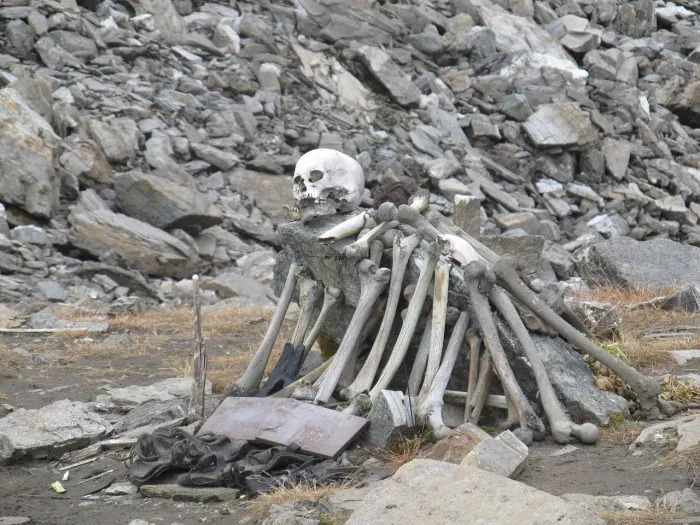
You might think that solves the puzzle. But Skeleton Lake had another secret yet to be revealed.
In 2019, a large-scale DNA and radiocarbon study revealed something that blew the minds of the researchers: not all the skeletons belonged to the same group or even the same century. Yes, one group died around 800 CE. But another cluster of skeletons dated to the early 1800s — a full thousand years later.
And these later skeletons were not even from the region. They were not from Southeast Asia. Instead, their DNA showed Eastern Mediterranean ancestry — genetic markers most closely linked to modern Greeks and Cretans. One other skeleton matched Southeast Asian ancestry. This leads to the question – Why were people from Greece and Thailand in a remote Himalayan lake in the 19th century?
We will never be able to accurately answer this question. Some suggest they were explorers, traders, or part of a colonial-era expedition that met an unfortunate end. What’s chilling is that their remains were found jumbled alongside the earlier bones, creating the illusion of one massive catastrophe. In reality, Skeleton Lake is a graveyard for at least two separate tragedies.
Flesh, Hair, and Bone
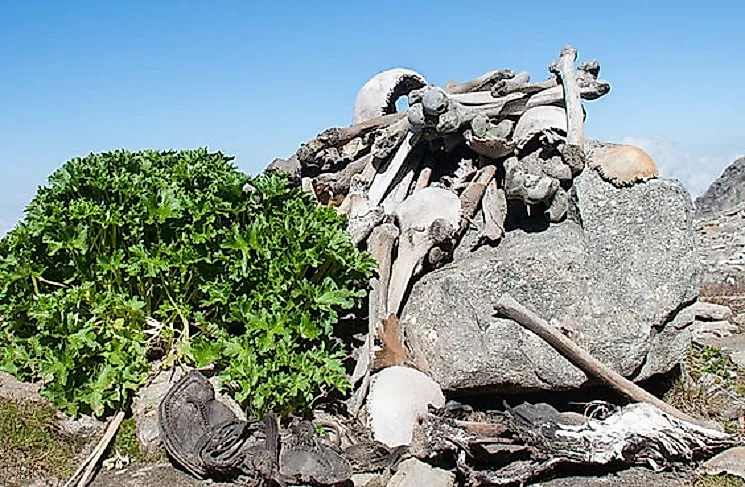
What makes this site so haunting is how well the bodies were preserved. The lake’s freezing waters acted like a natural refrigerator. Some skulls still had clumps of hair attached when first discovered. Patches of skin and muscle clung to ribcages and bones. Fingernails and toenails curled from mummified hands. For archaeologists, this preservation is a wonderful and rare gift — but for anyone stumbling across it unprepared, it must have been like walking into a nightmare.
Even today, when the snow melts, new bones emerge. Imagine standing on the rocky edge of the lake and seeing a skeletal hand slide out from under the ice. It’s no wonder the place inspires both awe and dread.
Why It Haunts Us
Skeleton Lake is more than just some type of morbid curiosity. It reminds us how fragile human life has always been, and how nature has the ability to end lives of whole groups in a single violent moment. It also shows how the world has long been interconnected, even in times we don’t usually imagine as global. The presence of Greek DNA in a Himalayan lake is proof that people have always wandered far, even when we have no idea as to why they were there.
Skeleton Lake isn’t just a pile of bones — it’s a frozen moment in human history, repeated across centuries. Pilgrims singing songs in devotion on a long trek, foreigners passing through the high passes, all cut down by nature. Today their bones lie side by side. Human beings who lived 1000 years apart, yet strangely united, telling us a story that is part mystery, part tragedy, and wholly unforgettable.

